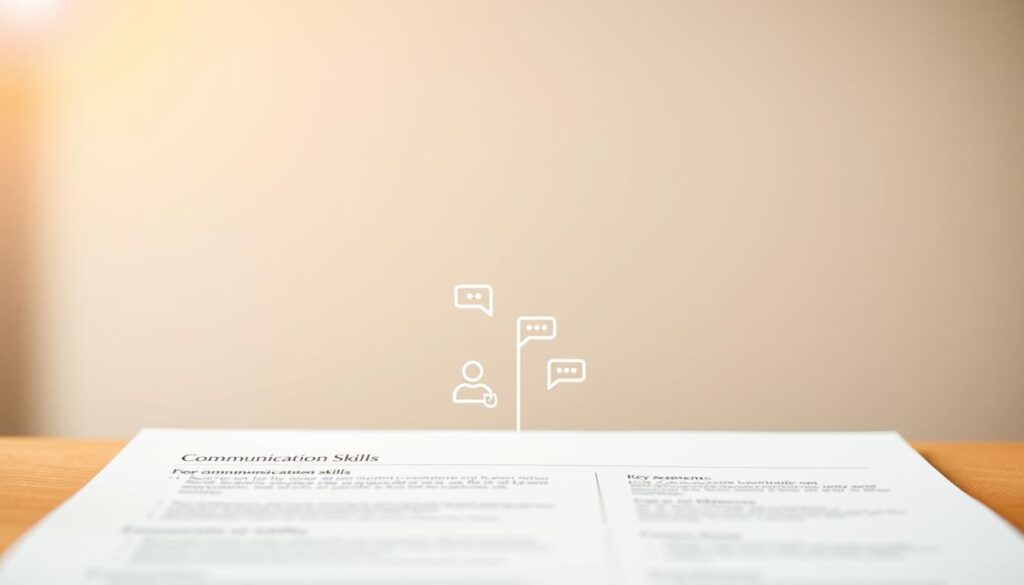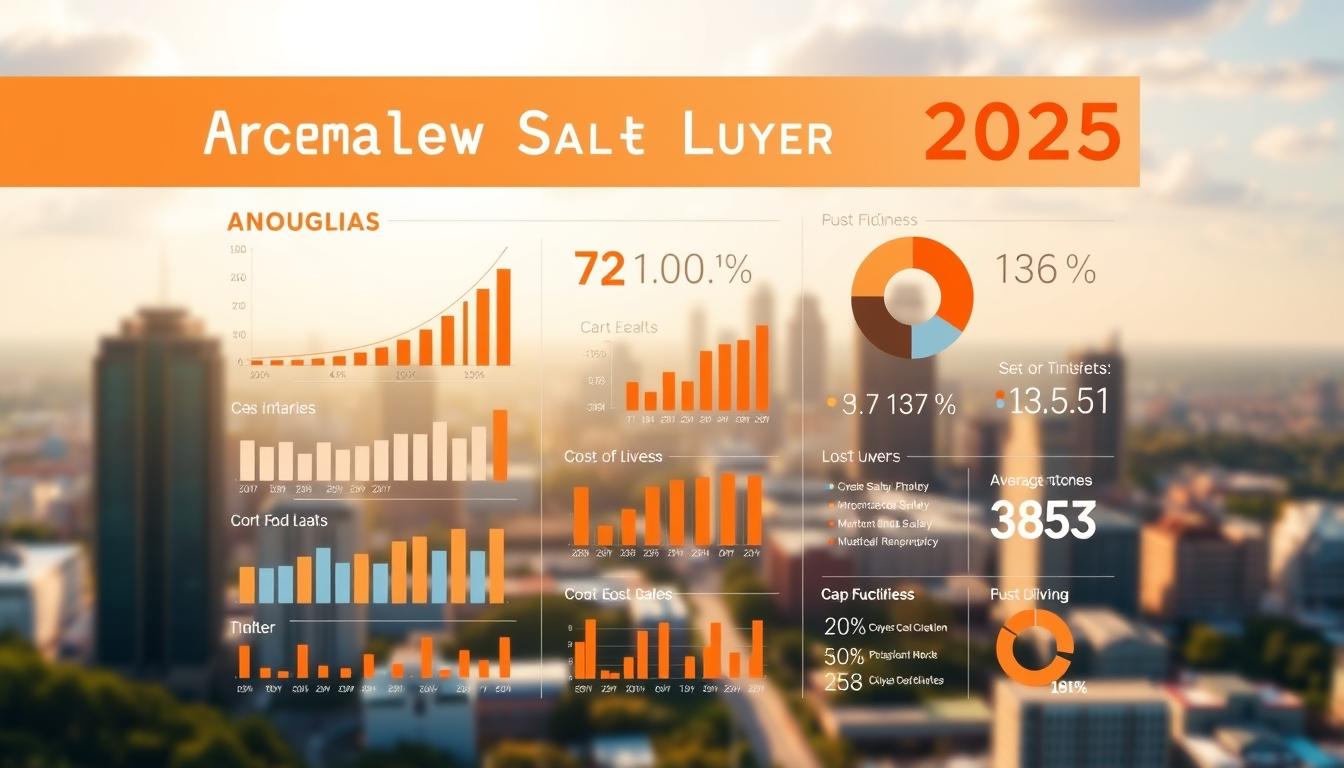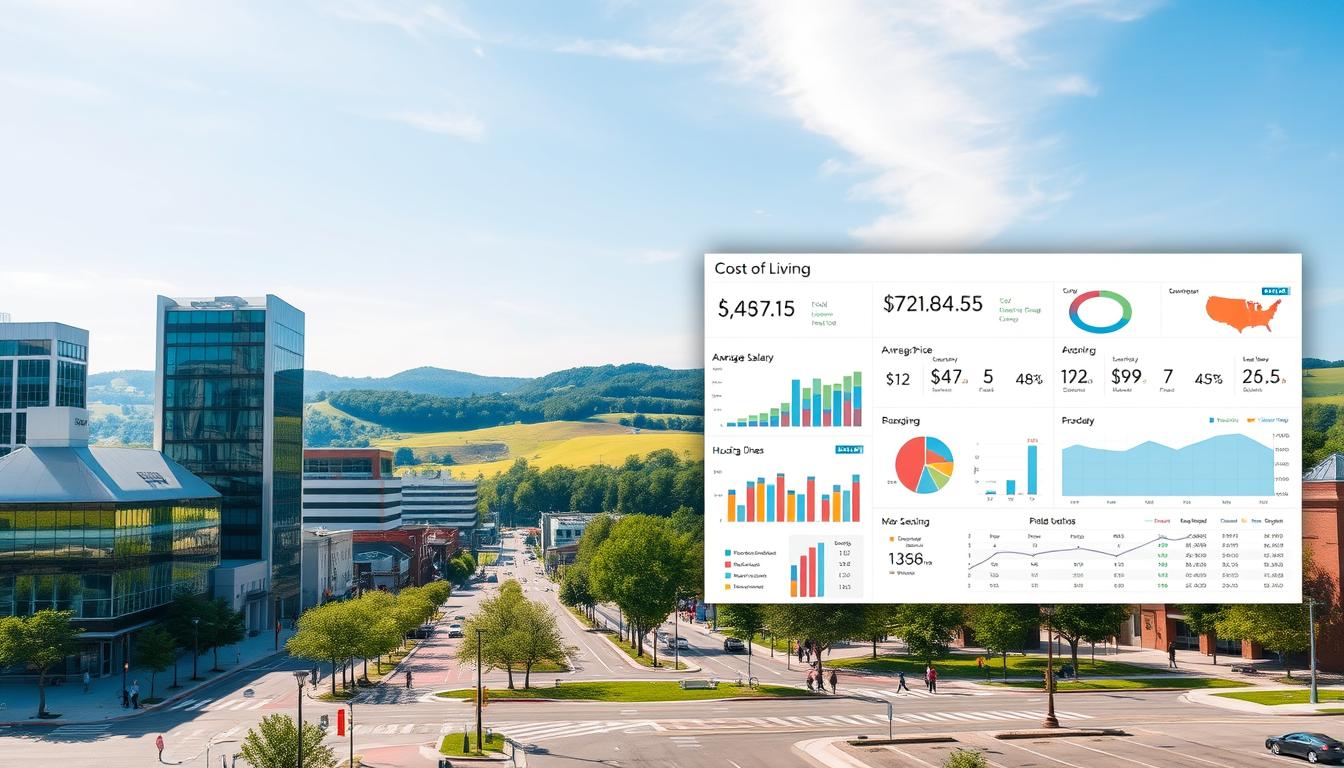Did you know that 73% of hiring managers decide on a candidate within the first five minutes? This shows how crucial those early moments are for your career.
With recent layoffs and fast AI changes, learning interview skills is more essential than ever. Your performance in interviews can make or break your job search efforts.
Today’s job market needs a full approach to interview prep. Modern interview skills must keep up with new work trends and tech.
Successful candidates know that good interview skills go hand-in-hand with resume optimization. Tools like RoboApply’s interview coach feature help you prepare well for every chance to show your skills.
This guide offers practical tips to turn nervous candidates into confident pros. You’ll learn strategies to stand out in tough interviews and move your career forward.
Key Takeaways
- First impressions matter most – 73% of hiring decisions happen within five minutes
- Interview skills directly complement your job search optimization efforts
- Modern interview techniques must adapt to evolving workplace dynamics
- Structured preparation using tools like RoboApply’s interview coach improves performance
- Confident interview skills help you stand out in competitive job markets
- Practical techniques transform nervous candidates into successful professionals
Understanding the Job Search Consultation Process
The job search consultation process changes how we look at career development. It connects you with experts who know the latest hiring trends. They help you match your skills with today’s job market needs.
New tech, changes in hiring, and shifts in work environments change how employers look at candidates. It’s key to stay ahead to find your dream job. Expert advice gives you the edge you need to succeed.
What is Job Search Consultation?
Job search consultation is a personalized service that guides you in your job search. Experts analyze your situation and create plans tailored to your goals. It’s more than just resume writing; it’s about career development strategies.
Consultants help with interview prep, salary talks, and how to apply in your field. They help you find the right companies and show you how to stand out. You get one-on-one sessions, detailed assessments, and ongoing support.
Today’s consultation services use tech and human expertise to boost your success. Many use automated tools to make your application process smoother while keeping a personal touch.
Benefits of Consulting a Job Search Expert
Professional consultation speeds up your job search by avoiding common mistakes. Experts craft a strong professional resume that gets past ATS systems and grabs hiring manager attention. They share industry-specific knowledge.
Consultants give you honest feedback on your presentation and skills. This outside view helps you see areas for improvement. Expert advice boosts your interview success by preparing you for tough questions.
Professional consultation helps you focus on the right opportunities. This saves time and boosts your chances of finding jobs that fit your goals. They also help you optimize your resume for ATS systems.
When to Seek Professional Help
Seek professional help if your job search is taking too long without results. If you’re not getting interviews despite many applications, expert advice can help. Career changes, industry shifts, or aiming for competitive jobs also need professional support.
People returning to work after a break benefit from consultation services. The job market changes fast, and consultants fill knowledge gaps. They update your professional resume and interview prep.
Senior-level professionals and executives need specialized help due to the unique challenges of their job searches. The stakes are high, and the competition is fierce. Professional guidance is crucial for complex negotiations and positioning in the executive market.
Preparing for Your Job Interview
Getting ready for your interview is key. Effective job application strategies start before you meet the interviewer. They involve deep research, careful analysis, and tailoring your materials.
Being well-prepared can make a big difference. It shows you’re serious and committed. Employers notice this right away.

Researching the Company
Knowing the company well is crucial. You need to understand their culture, values, and recent news. This shows you fit in and care about the company.
Start with the company’s official website. Look at their mission, leadership, and recent news. The “About Us” and “Careers” sections are key to understanding their culture and values.
Also, check their social media on LinkedIn, Twitter, and other platforms. This shows how they communicate and what they focus on.
- Review recent press releases and news articles about the company
- Check their financial performance and growth trajectory
- Identify key competitors and market challenges
- Research the hiring manager and interview panel members on LinkedIn
- Look for employee reviews on sites like Glassdoor for insider perspectives
Use this info to ask smart questions and show you know the company. Employers like candidates who are genuinely interested in their success.
Companies want to hire people who are excited about what they do, not just people who need a job.
Understanding the Job Description
Job descriptions are full of clues. Successful candidates decode these messages and prepare answers that meet employer needs.
Read the job posting many times. Look for themes, required skills, and preferred qualifications. Notice the language and prioritize what’s most important.
Make a list of your skills against the job’s requirements. This helps you prepare examples that show you’re qualified.
- Highlight all required skills and qualifications
- Identify preferred or “nice-to-have” qualifications
- Note specific software, tools, or methodologies mentioned
- Analyze the job level and reporting structure
- Understand the role’s key performance indicators
Look for the employer’s pain points. Job descriptions often highlight challenges the company faces. This gives you a chance to show how you can solve these problems.
The most successful candidates prepare stories that directly address the employer’s stated needs and concerns.
Tailoring Your Resume and Cover Letter
Resume writing is more effective when tailored for each job. Generic applications rarely work in today’s job market.
Your resume should use the job description’s language and highlight your achievements. Use the same keywords and phrases to pass applicant tracking systems.
Focus on specific achievements that show you can meet the employer’s needs. Replace generic job duties with specific accomplishments that demonstrate your impact.
Here’s an example of effective resume tailoring:
Generic version: “Managed social media accounts and increased engagement.”
Tailored version: “Developed and executed social media strategy across 5 platforms, increasing engagement by 150% and generating 200+ qualified leads monthly for B2B software company.”
Your cover letter should tell a compelling story about why you’re the perfect fit. Address the hiring manager by name and mention specific company initiatives or challenges.
- Use clear headings and bullet points for easy scanning
- Incorporate relevant keywords throughout your content
- Maintain a simple, clean, black-and-white design
- Optimize for applicant tracking systems with standard formatting
- Include metrics and specific achievements
Applicant tracking systems scan resumes for keywords and data. Optimize your resume for these systems by using relevant keywords while keeping it easy to read.
Hiring managers only spend seconds on each application at first. Your tailored materials must grab their attention right away and show clear alignment with their needs.
The effort in customization greatly increases your chances of getting an interview and doing well in it.
Mastering Common Interview Questions
The best candidates use proven methods to answer interview questions. They show their value by using structured ways to talk about their achievements. Numbers speak louder than words when it comes to showing what you can do.
Instead of just listing your job duties, use numbers and results to talk about your achievements. This shows the real value you’ve added in your past jobs. Your answers become strong proof of your skills, not just general descriptions.
Behavioral Interview Techniques
Behavioral interviews look at your past to guess how you’ll do in the future. You’ll be asked to share specific examples from your work history. These questions start with phrases like “Tell me about a time when” or “Describe a situation where.”
Your goal is to show your problem-solving, leadership, and fit with the company’s culture through your stories. Preparation is key because you need examples ready for common themes. Focus on teamwork, solving conflicts, leading, and overcoming challenges.
Good resume tips include keeping a record of your achievements with numbers. This helps with both your CV and interview prep. You can use these examples when answering behavioral questions.
STAR Method for Answering Questions
The STAR method is a great way to answer questions that impress hiring managers. It makes sure you cover all important parts: Situation, Task, Action, and Results.
Situation: Start by setting the scene and giving some background. Keep it short but clear.
Task: Explain what you were responsible for or the challenge you faced. This shows your role in the situation.
Action: Describe the steps you took to solve the problem. Highlight your own contributions and how you made decisions.
Results: Share the outcomes and impact of your actions. Use numbers, percentages, or measurable improvements whenever you can.
For example, instead of saying “I improved team productivity,” say “I introduced a new workflow system. It boosted team productivity by 25% and cut project time by three days.” This shows your achievements clearly.
RoboApply’s interview coach helps you practice STAR answers and get feedback. It helps you improve your storytelling and show your value.
Questions You Should Ask Interviewers
Asking smart questions shows you’re strategic and interested in the role and company. Your questions should show you’ve done your research and are curious about the company’s future.
Ask about team dynamics, growth chances, and company culture. Questions like “What does success look like in this role after six months?” show you’re serious about doing well. Avoid asking about salary, benefits, or vacation time in the first interview.
Good questions might include:
- What are the biggest challenges facing the team currently?
- How does this role contribute to the company’s strategic goals?
- What opportunities are there for professional growth and advancement?
- How would you describe the company culture and work environment?
Your questions should also tie to your CV strategy. If you’ve highlighted certain skills or experiences, ask how they apply to this role. This shows you’re a good fit for the job.
Remember, interviews are a two-way conversation. Your questions help you see if the job fits your career goals and values. Quality questions show your analytical thinking and show you’re seriously considering the role.
Enhancing Your Communication Skills
Being good at talking and listening is key in any job interview. These skills, along with a well-formatted resume, make you stand out. They show you’re smart and can connect well with others.
Your ability to communicate is as important as the resume keywords you pick. Your resume might get you noticed, but how you talk and act will seal the deal.

Verbal Communication Strategies
Your voice is very powerful in interviews. Speak clearly and slowly, so people can understand you. Change your tone to highlight important points and keep the conversation interesting.
Use the PREP method to answer questions. Start with your Point, then give a Reason, an Example, and end with your Point. This makes your answers clear and shows you can solve problems.
Don’t use words like “um” or “like” that can make you seem less professional. Take short pauses to think before you speak. These pauses show you’re confident and thoughtful.
When talking about your past, focus on achievements that match the job. Tools like RoboApply help you pick the right experiences to share. This makes sure your words and your resume match.
Non-Verbal Communication Tips
Your body language is important before you even say a word. Look at your interviewer for 50-70% of the time. This shows you’re interested and confident.
Stand up straight and lean a bit forward to show you’re engaged. Avoid crossing your arms or fidgeting, as it can look defensive or nervous.
Use your hands to emphasize points, but do it in a controlled way. Practice these gestures so they feel natural and supportive of your words.
| Communication Element | Positive Signals | Negative Signals | Impact on Interview |
|---|---|---|---|
| Eye Contact | Steady, appropriate duration | Avoiding or excessive staring | Builds trust and connection |
| Voice Tone | Confident, varied inflection | Monotone or overly high pitch | Conveys enthusiasm and competence |
| Posture | Upright, slightly forward lean | Slouching or rigid positioning | Shows professionalism and interest |
| Facial Expression | Genuine smiles, attentive look | Blank stare or forced expressions | Creates positive rapport |
Your face should show what you’re saying. Listen well by nodding and showing you care about what the interviewer is saying.
Remember, good communication is not just for interviews. It’s also important for networking, following up, and building relationships in your career.
Building Confidence for Interviews
Professional confidence is a skill you can learn. It comes from practice and managing anxiety well. How confident you seem in interviews can really affect your career development and job chances.
Being well-prepared and using psychological tricks can help you manage stress. This lets you show your best self in interviews. When you get good at this, your nervousness turns into enthusiasm that impresses interviewers.
“Continuous learning is the minimum requirement for success in any field.”
This idea is key for interview confidence. Every interaction is a chance to learn and get better at finding jobs. It helps you prepare for future successes.
Techniques to Reduce Anxiety
Reducing anxiety needs a plan that tackles both body and mind. These methods help you stay calm and think clearly, even when faced with tough questions.
Progressive muscle relaxation is a technique that involves tensing and relaxing muscles. Start with your toes and move up, holding each muscle group for five seconds before releasing. It helps reduce physical stress and makes you feel calmer.
The 4-7-8 breathing technique calms your nervous system. Breathe in for four counts, hold for seven, then breathe out for eight. Doing this daily helps your body relax naturally.
Cognitive reframing changes negative thoughts into positive ones. Instead of thinking “I’ll mess up,” say to yourself “I’m ready to share my skills.” This mindset shift makes you feel more confident.
Using these techniques regularly makes you better at handling anxiety. The more you practice, the easier it becomes to stay calm in stressful situations like interviews.
Visualization and Mental Preparation
Mental rehearsal gets your brain ready for success. It creates pathways in your brain that support confident behavior. Visualizing challenges and preparing answers shows your value to employers.
Detailed scenario visualization means imagining the whole interview from start to finish. Picture yourself walking into the building, greeting the receptionist, and talking naturally with the interviewers. This practice makes you feel more familiar and less uncertain.
Create success anchors by thinking about times when you felt confident and capable. Remember achievements, positive feedback, or times you overcame challenges. These memories help you stay confident during interviews.
Practice response visualization for common interview questions. Imagine answering questions with specific examples, asking smart questions about the role, and handling unexpected questions calmly.
| Confidence Building Technique | Time Required | Best Used When | Expected Outcome |
|---|---|---|---|
| Progressive Muscle Relaxation | 10-15 minutes | Before sleep or morning preparation | Reduced physical tension and stress |
| 4-7-8 Breathing | 2-3 minutes | Immediately before interviews | Calm nervous system activation |
| Cognitive Reframing | 5-10 minutes | When negative thoughts arise | Positive mindset shift |
| Visualization Practice | 15-20 minutes | Daily preparation routine | Mental rehearsal and confidence |
Regular use of interview coaching tools makes you better at preparing. Tools that offer realistic interview simulations help you get comfortable through repeated practice and feedback.
Your career development will improve when you approach interviews with real confidence. True confidence comes from knowing you’re ready, qualified, and eager to contribute to the company.
Remember, building confidence is a journey. Every interview, whether it goes well or not, teaches you something new. It helps you get better for the next time.
Professional Appearance Matters
Your professional look is a key part of your professional resume and application. Just like you work hard on your resume writing, your appearance is important. When you meet someone for the first time, they notice your look before you speak.
Your look and your application materials should match. Tools like RoboApply help with resumes, but your appearance must also be top-notch. Your look should show you’re competent and detail-oriented, just like your application.

Dress Codes for Different Industries
Knowing what to wear in different jobs is key. Each industry has its own dress code that shows respect and professionalism.
Traditional Business Environments need formal clothes that show you’re serious and reliable. Here are some tips:
- Banking and finance: Dark suits, conservative ties, polished leather shoes
- Law firms: Business formal with minimal accessories and neutral colors
- Government positions: Conservative styling with attention to detail
- Healthcare administration: Professional but approachable appearance
Creative and Tech Industries have more relaxed dress codes but still need to look professional:
- Advertising agencies: Business casual with creative touches
- Tech startups: Smart casual that shows personality
- Design firms: Stylish but practical clothing choices
- Media companies: Trendy professional wear
Learn about your target company’s culture online. This shows you’re serious about your professional resume and the job.
Tips for Maintaining a Polished Look
How you look and groom yourself makes a big difference. It shows you’re serious about your job and ready to impress.
Personal grooming standards are key to looking professional:
- Maintain well-groomed hair with a recent cut or styling
- Ensure clean, trimmed nails and fresh breath
- Choose subtle fragrances or avoid them entirely
- Keep facial hair neat and well-maintained
Clothing maintenance shows you’re detail-oriented and organized:
- Press or steam garments the night before your interview
- Check for loose buttons, stains, or fabric pulls
- Ensure proper fit without being too tight or loose
- Coordinate colors and patterns thoughtfully
Your accessories should add to your look, not take away from it. Choose items that enhance your professional image without being too much.
Your polished appearance and your application materials work together. When they match, you’re more likely to succeed in your interview.
The Importance of Body Language
Professional body language shows you’re serious about the job. It makes a first impression that can help or hurt your resume. Effective nonverbal communication shows confidence and professionalism before you say a word.
Studies say hiring managers make up their minds in just seven seconds. Your body language, like your posture and facial expressions, tells them a lot. It should match the story your resume tells.
“The document has to tell a story,” says Michaela Buttler, a senior consultant at Korn Ferry. “One that conveys that you not only have the skills but also the potential to be a good teammate, coworker, and contributor.”
Your body language continues this story in person. Consistent messaging across all touchpoints strengthens your candidacy. It shows you’ve thought about your application carefully.

Recognizing Positive Body Language
Positive body language shows you’re engaged and confident. Proper posture shows respect for the interviewer and the opportunity. Sit up straight with your shoulders back and feet flat on the floor.
Maintain eye contact during the conversation. Look directly at the interviewer when they speak and when you respond. This shows you’re listening and interested.
Use purposeful hand gestures to emphasize points. Keep your hands visible and avoid crossing your arms. Open gestures suggest openness to collaboration and teamwork.
Here’s an example of positive body language in action:
When talking about your project management experience, lean forward to show you’re engaged. Use open palm gestures while explaining your process. Keep steady eye contact and nod when the interviewer responds. This shows confidence in your abilities.
Avoiding Negative Body Language
Negative body language can hurt your chances, even with great qualifications. Fidgeting behaviors distract from your message and suggest nervousness. Avoid tapping your fingers, bouncing your leg, or playing with objects.
Closed postures create barriers. Don’t cross your arms, hunch your shoulders, or turn your body away. These positions suggest defensiveness or disinterest.
Poor eye contact can make you seem unsure or dishonest. Avoid staring at the floor, ceiling, or your hands. Inconsistent eye contact can be interpreted as evasiveness or lack of preparation.
Consider this negative example to avoid:
Slouching in your chair while discussing your achievements makes them less impactful. Looking away frequently while answering questions about your experience suggests uncertainty. Crossing your arms when asked about challenges implies defensiveness. These behaviors contradict the confidence your resume should project.
| Body Language Element | Positive Signals | Negative Signals | Impact on Interview |
|---|---|---|---|
| Posture | Upright, shoulders back, leaning slightly forward | Slouching, hunched shoulders, leaning away | Demonstrates respect and engagement vs. disinterest |
| Eye Contact | Direct, appropriate duration, natural breaks | Avoiding eyes, staring, looking around frequently | Shows confidence and honesty vs. nervousness or evasion |
| Hand Gestures | Open palms, purposeful movements, visible hands | Crossed arms, fidgeting, hidden hands | Suggests openness and emphasis vs. defensiveness |
| Facial Expression | Genuine smile, attentive expression, appropriate reactions | Blank stare, forced smile, inappropriate expressions | Conveys enthusiasm and understanding vs. disconnection |
Your body language should match the professional image you’ve shown in your application. Consistent nonverbal communication reinforces your written qualifications and presents a unified candidate image.
Practice these techniques before your interview. Record yourself answering common questions to spot any negative habits. Self-awareness allows you to project the confidence your resume tips have helped you build on paper.
Navigating Virtual Interviews
Virtual interviews have changed the job search world. They need new skills and preparation. Remote work is now common, making it key to know how to do well in virtual interviews.
Employers want you to show you’re good with technology and can adapt. These skills show you’re ready for remote jobs. Make sure your resume format shows you’re good at digital communication and have experience with remote work.
Job search platforms like RoboApply help you find virtual interview chances. They also help you keep track of follow-ups. The platform’s interview coach helps you get ready for common virtual interview questions and technical issues.
Setting Up Your Space
Your interview space shows your professionalism. Pick a quiet, well-lit area with few distractions. Make sure your camera is at eye level for natural eye contact.
Good lighting is important for your virtual look. Natural light from a window is best. Avoid backlighting that makes shadows on your face. Test your setup to look clear and professional on camera.
Your background should be simple and neutral. A plain wall or a professional virtual background works well. Make sure your space looks as professional as you would in person.
Technology Tips for a Smooth Experience
Good tech setup prevents interruptions. Check your internet, camera, and microphone 30 minutes before. Have a phone number and other video platforms ready as backups.
Get familiar with the interview platform. Whether it’s Zoom, Microsoft Teams, or Google Meet, practice its features. This shows you’re tech-savvy and helps you feel less nervous.
Keep your CV optimization documents on your desktop. You might need to share them during the interview. Having them ready shows you’re organized and prepared.
For more tips on virtual interviews, check out this article on virtual interview success.
| Technical Element | Preparation Required | Backup Solution | Professional Impact |
|---|---|---|---|
| Internet Connection | Speed test 30 minutes prior | Mobile hotspot ready | Prevents connection drops |
| Audio Quality | Test microphone and speakers | Headphones available | Ensures clear communication |
| Video Setup | Camera positioning and lighting | Phone camera as alternative | Maintains professional appearance |
| Platform Familiarity | Practice with interview software | Phone number for backup | Demonstrates technical competence |
Virtual interviews need the same prep as in-person ones. Your tech setup and digital presence should match your resume and cover letter. Doing well in virtual interviews shows you’re ready for remote work.
Following Up After the Interview
Following up after an interview can turn a good interview into a job offer. Your actions show you’re professional and highlight your skills. This keeps you in the hiring manager’s mind while others are forgotten.
Timing, personalization, and purpose are key in follow-up. You must be persistent yet respectful of the hiring manager’s time. This keeps your job search momentum going.
Your follow-up messages should add value and show you’re still interested. They should be part of your overall career strategy. Keep your resume updated to reflect your growth.
How to Write a Thank-You Note
Your thank-you note does more than say thank you. It highlights your qualifications and addresses any interview concerns. A well-written note can set you apart from others who don’t bother.
Write your note within 24 hours of the interview. Mention specific points from the conversation to make it personal. This shows you were fully engaged.
Include three main points in your note. Thank the interviewer for their time and insights. Then, highlight your best qualifications for the job. Lastly, address any questions or concerns from the interview.
Your follow-up email after interview should be professional like your initial application. Keep it concise but meaningful, focusing on adding value.
Timing Your Follow-Up Communications
Timing is everything in follow-up. You want to be seen as professional, not pushy. Most hiring managers appreciate timely follow-ups.
Send your thank-you note within 24 hours. This shows you’re prompt without being too eager. Timing shows respect for the interviewer’s schedule and decision-making process.
Plan your next follow-ups based on the interview timeline. If no timeline was mentioned, wait a week before reaching out again. This keeps your application active and supports your resume optimization efforts.
| Follow-Up Stage | Timing | Purpose | Key Elements |
|---|---|---|---|
| Thank-You Note | Within 24 hours | Express gratitude and reinforce qualifications | Specific conversation references, value proposition |
| Status Check | 1 week after promised timeline | Maintain visibility and show continued interest | Brief inquiry, additional relevant information |
| Final Follow-Up | 2 weeks after status check | Professional closure or timeline clarification | Respectful persistence, alternative contact methods |
| Long-Term Touch | 3-6 months later | Network building for future opportunities | Career updates, industry insights, relationship maintenance |
Modern job search tools can make follow-up easier. Tools like RoboApply’s outreach CRM help manage follow-ups across different opportunities. This ensures your communication is consistent and professional.
Keep track of your follow-up efforts to improve. Note response rates and feedback to refine your strategy. This data-driven approach boosts your job search success and career goals.
Learning from Rejection
Rejection from interviews doesn’t define your worth—it provides critical data for improving your professional approach. Every “no” contains valuable insights that can accelerate your career development and strengthen your candidacy for future opportunities. The key lies in transforming disappointment into actionable improvement strategies.
Smart job seekers understand that rejection is feedback, not failure. When you shift your mindset from viewing rejection as a personal shortcoming to seeing it as professional intelligence, you unlock powerful growth opportunities. This perspective change becomes the foundation for continuous improvement in your job search strategy.
Analyzing the Interview Experience
Systematic analysis of your interview performance reveals patterns that might be hidden. Start by documenting your experience within 24 hours. Record specific questions asked, your responses, and the interviewer’s reactions or follow-up questions.
Create a structured review process that examines both technical and soft skill demonstrations. Consider how well you articulated your experience, whether you provided concrete examples, and if your answers aligned with the job requirements. This analysis helps identify gaps between your professional resume content and your verbal presentation.
RoboApply’s interview tracking feature allows you to maintain detailed records of each interview experience. You can log questions, rate your performance, and track improvement areas across multiple opportunities. This systematic approach helps you identify recurring challenges and measure progress over time.
Using Feedback to Improve
Actively seeking feedback transforms rejection into a career development tool. Reach out to interviewers or recruiters within a week of receiving rejection news. Express gratitude for their time and politely request specific feedback about areas for improvement.
When feedback is provided, resist the urge to defend your responses or explain your reasoning. Instead, listen carefully and ask clarifying questions that help you understand exactly what improvements would strengthen your candidacy. This information becomes invaluable for updating your professional resume and refining your interview approach.
Document all feedback in a centralized location where you can review patterns and track your improvement efforts. RoboApply’s feedback management system helps you organize these insights and create action plans for addressing identified weaknesses.
| Feedback Type | Improvement Action | Timeline | Measurement Method |
|---|---|---|---|
| Technical Skills Gap | Complete relevant certification or training | 30-90 days | Add credential to resume |
| Communication Issues | Practice storytelling and STAR method | 2-4 weeks | Record practice sessions |
| Industry Knowledge | Research company trends and challenges | 1-2 weeks | Demonstrate knowledge in next interview |
| Experience Presentation | Revise resume bullet points for clarity | 1 week | A/B test different versions |
Remember that each rejection brings you closer to the right opportunity. By maintaining a growth mindset and systematically applying lessons learned, you transform temporary setbacks into permanent improvements that enhance your overall career development trajectory.
Continuous Improvement in Job Search Skills
Your job search journey doesn’t end with landing a position. The modern job market changes fast. It’s key to keep improving your skills for long-term success. Staying up-to-date with trends and honing your interview skills makes you competitive.
Attending Workshops and Seminars
Professional development workshops give you hands-on experience with new job search strategies. Career centers, professional groups, and industry events often host seminars. They cover interview techniques, networking, and market trends.
Virtual workshops make it easier to learn from experts anywhere. Many organizations offer training in behavioral interviews, salary talks, and job search tactics for specific industries.
Resources for Ongoing Learning
Online platforms like LinkedIn Learning and Coursera offer in-depth courses on career growth. Reading professional books, industry publications, and career blogs keeps you updated on trends and best practices.
RoboApply is your go-to for managing your professional growth. It helps you track your skill development and keeps your application materials up-to-date. Regularly updating your resume keywords makes sure you’re seen by employers.
Make a personal learning plan that fits your career goals. Set aside time each month for learning, whether through reading, online courses, or networking. This forward-thinking approach puts you ahead of others in the job market.
FAQ
How important are job interview skills in today’s competitive job market?
Job interview skills are very important today. They help you succeed in your job search and career goals. Knowing how to handle both traditional and virtual interviews is key.
Your performance in interviews can make a big difference. It’s as important as having a well-written resume.
What exactly does job search consultation involve?
Job search consultation helps you improve your resume and prepare for interviews. Experts share tips on how to stand out in your job search. They also help you plan your career.
These services work well with tools like RoboApply. Together, they make your job search more effective.
When should I consider seeking professional help with my job search?
You might need professional help during career changes or when searching for competitive jobs. If you’re getting interviews but no offers, or if you struggle to show your skills, expert advice can help.
How should I research a company before an interview?
Research the company by looking at their culture, news, and financials. Check their website, social media, and recent press releases. Also, read employee reviews on sites like Glassdoor.
This shows you’re interested and helps you fit in during the interview.
What’s the best way to analyze a job description for interview preparation?
Analyze job descriptions by finding keywords and required skills. Look at the language and what the company values. This helps you answer questions that show your fit for the job.
How can I tailor my resume and cover letter for specific interviews?
Tailor your application by using keywords and highlighting relevant experience. Customize your summary and achievements to match the job. Tools like RoboApply can help make your application stand out.
What are behavioral interview questions and how should I handle them?
Behavioral questions ask about your past experiences. They help predict your future performance. Use the STAR method to answer these questions and show your skills and fit.
How does the STAR method work for answering interview questions?
The STAR method helps you answer questions clearly. It stands for Situation, Task, Action, and Results. This method shows your achievements and value to employers.
What questions should I ask interviewers?
Ask questions that show you’re interested and strategic. Focus on company culture, growth, and team dynamics. Avoid salary questions in first interviews. Good questions show you’re serious about the opportunity.
How can I improve my verbal communication during interviews?
Improve your verbal communication by speaking clearly and confidently. Practice speaking without filler words. Use tools like RoboApply’s interview coach to get better.
What non-verbal communication tips should I follow in interviews?
Use eye contact, confident posture, and purposeful gestures. Pay attention to your facial expressions and body language. This creates a professional image.
How can I reduce interview anxiety and build confidence?
Use deep breathing and progressive muscle relaxation to reduce anxiety. Practice regularly to build confidence. Preparation helps you feel more comfortable and confident.
What role does visualization play in interview preparation?
Visualization helps you prepare for challenges and respond confidently. It allows you to practice scenarios and develop automatic responses. This mental preparation complements your interview skills.
How should I dress for interviews in different industries?
Dress professionally by researching industry dress codes. For finance and law, wear business formal. For most corporate jobs, business casual is fine. Tech startups might prefer smart casual.
What grooming and appearance tips ensure a polished look?
Keep your appearance polished by grooming well and choosing the right accessories. Wear clean, pressed clothes and well-maintained shoes. Your appearance should match your professional brand.
What positive body language should I display during interviews?
Show positive body language by sitting up straight and making eye contact. Use open gestures to reinforce your words. This conveys confidence and professionalism.
What negative body language should I avoid in interviews?
Avoid body language that undermines your credibility, like fidgeting or crossing your arms. Stay focused and avoid distractions. This helps you make a good impression.
How do I set up an effective space for virtual interviews?
Create a professional virtual space with good lighting and a clean background. Test your technology and have backup plans. Your virtual presence should be as professional as in-person.
What technology tips ensure smooth virtual interviews?
Familiarize yourself with the interview platform and test your connection. Have backup plans and minimize distractions. This ensures a smooth interview experience.
How should I write an effective thank-you note after interviews?
Write thank-you notes that reinforce your qualifications and show continued interest. Reference specific conversation points and highlight your value. This supports your job application efforts.
What’s the proper timing for follow-up communications?
Follow up within 24 hours with a thank-you note, then wait one to two weeks. Show persistence without being desperate. Tools like RoboApply can help manage follow-ups.
How can I learn from interview rejections?
Learn from rejections by analyzing your performance and identifying areas for improvement. Seek feedback and use it to grow. This approach helps you improve and advance in your career.
How should I use feedback to improve my interview performance?
Use feedback to enhance your interview skills by asking for specific advice and taking notes. Practice addressing weaknesses. This helps you improve and increase your chances of success.
What workshops and seminars can help improve my job search skills?
Attend workshops on interview skills, networking, and industry knowledge. Look for opportunities through professional associations and online platforms. These help keep your skills up-to-date.
What resources support ongoing learning for job search improvement?
Use books, online courses, and professional associations for ongoing learning. Create a learning plan aligned with your goals. Platforms like RoboApply can help with CV optimization and professional development.


















